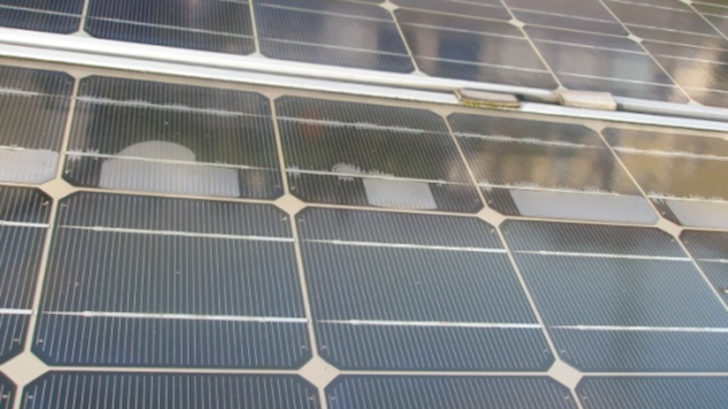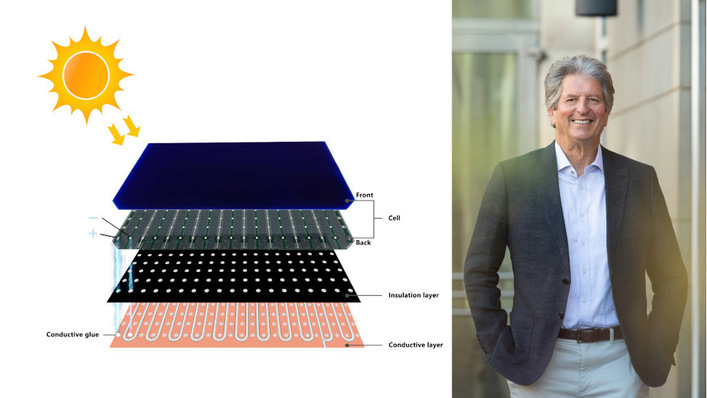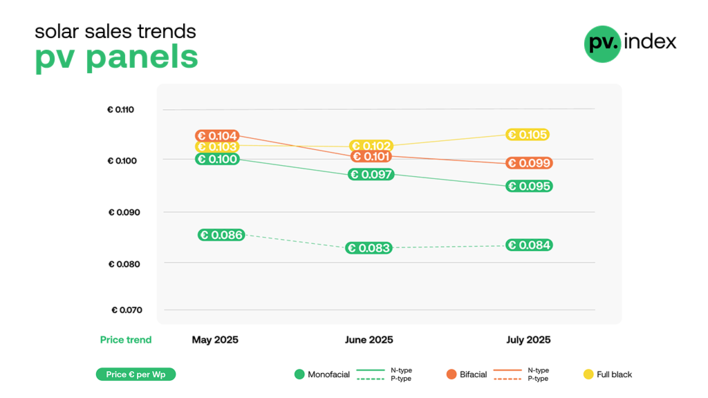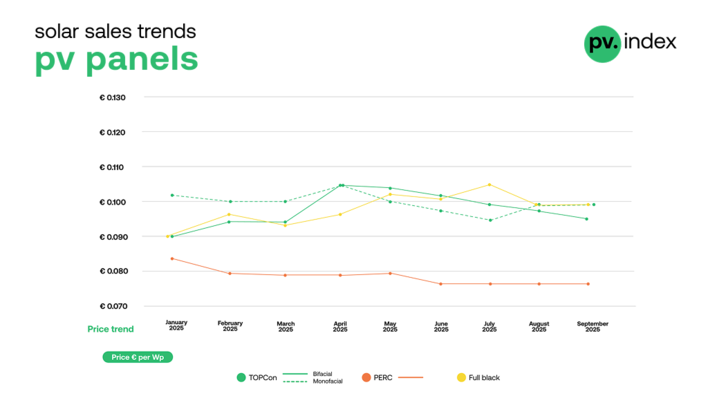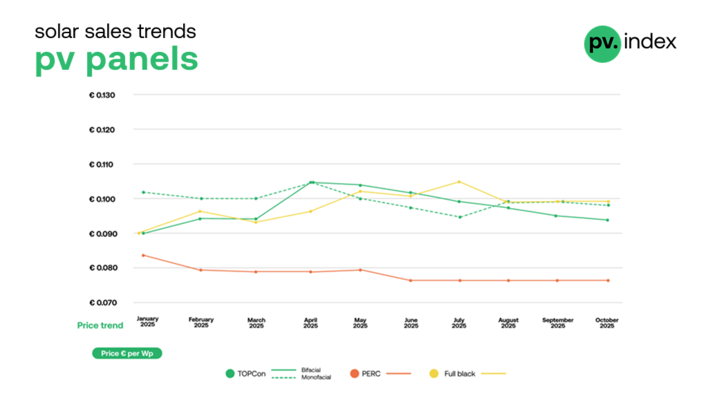The new blog from online retailer Secondsol deals with these and other questions about faults in the modules. It will be continuously expanded to help installers and test personnel recognise conspicuous faults and damage patterns.
Stay up to date and sign up for our newsletter!
Film detaches from the cells or glass
In the case of delamination, for example, the film-wrapped laminate detaches from the glass. The film can also detach from the cells. This phenomenon can be recognised by flat clouding under the front glass that resembles air bubbles. This clouding usually occurs along the edges of the solar cells. However, they can also appear as spots that extend over large parts of the module surface.
See also: Research project for the repair of old modules starts
Flat discolouration is clearly visible
Delamination differs clearly from other defects such as snail trails, which cause similar discolouration. While slug marks show clearly defined lines, delamination manifests itself in extensive discolouration.
If the adhesion to the glass or film dissolves, moisture can penetrate. This is usually caused by defects in the manufacture of the solar modules. The result: the performance of the modules decreases, sometimes rapidly. If the delamination spreads across the module, insulation faults can occur. If the rear encapsulation film becomes detached from the solar cells, the junction box can also become detached. This creates an acute risk of electric arcing.
Also interesting: Korean investment in German PV recycler Flaxres
What can solar installers do? Delaminated modules must be replaced. It should be checked whether there are still warranty claims against the manufacturer or importer that can be asserted. (HS/mfo)


